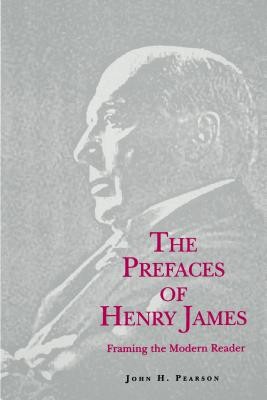
- We will send in 10–14 business days.
- Author: John H Pearson
- Publisher: Penn State University Press
- ISBN-10: 0271026618
- ISBN-13: 9780271026619
- Format: 16.1 x 22.9 x 1.2 cm, softcover
- Language: English
- SAVE -10% with code: EXTRA
Reviews
Description
The first decade of the twentieth century saw Henry James at work selecting and revising his novels and tales for a collection of his work known as the New York Edition. James not only made extensive revisions of his early works; he added eighteen prefaces that provide what many readers believe to be the best commentary on his fiction. John Pearson argues here for a reading of the prefaces within the context of the New York Edition as James's attempt to construct an ideal reader, one attentive to his art and authorial performance.
Throughout his discussion of the eighteen prefaces, Pearson examines the strategies that James implements for preparing the reader for the prefaced texts. He argues that James sought to create the modern reader, one who would learn to appreciate and discriminate his literary art through reading the prefaces. By demonstrating that the prefaces frame the novels and tales in aesthetic histories that are authorized and authenticated by the author-historian's personal memory, Pearson accomplishes his analysis of James's use of the frame and how it systematically instructed the reader in the Jamesian aesthetic of fiction. Through close readings of several of the novels and tales including The Awkward Age, What Maisie Knew, The Portrait of a Lady, The Aspern Papers, and The Wings of the Dove, Pearson's comprehensive study examines the various framing strategies at work and considers the broader theoretical implications of reading through the prefaces.
Pearson's eclectic theoretical approach, similar to the recent poststructural work of John Carlos Rowe, makes a complex argument accessible to an educated reader untutored in recent poststructural literary theory.
EXTRA 10 % discount with code: EXTRA
The promotion ends in 16d.14:34:12
The discount code is valid when purchasing from 10 €. Discounts do not stack.
- Author: John H Pearson
- Publisher: Penn State University Press
- ISBN-10: 0271026618
- ISBN-13: 9780271026619
- Format: 16.1 x 22.9 x 1.2 cm, softcover
- Language: English English
The first decade of the twentieth century saw Henry James at work selecting and revising his novels and tales for a collection of his work known as the New York Edition. James not only made extensive revisions of his early works; he added eighteen prefaces that provide what many readers believe to be the best commentary on his fiction. John Pearson argues here for a reading of the prefaces within the context of the New York Edition as James's attempt to construct an ideal reader, one attentive to his art and authorial performance.
Throughout his discussion of the eighteen prefaces, Pearson examines the strategies that James implements for preparing the reader for the prefaced texts. He argues that James sought to create the modern reader, one who would learn to appreciate and discriminate his literary art through reading the prefaces. By demonstrating that the prefaces frame the novels and tales in aesthetic histories that are authorized and authenticated by the author-historian's personal memory, Pearson accomplishes his analysis of James's use of the frame and how it systematically instructed the reader in the Jamesian aesthetic of fiction. Through close readings of several of the novels and tales including The Awkward Age, What Maisie Knew, The Portrait of a Lady, The Aspern Papers, and The Wings of the Dove, Pearson's comprehensive study examines the various framing strategies at work and considers the broader theoretical implications of reading through the prefaces.
Pearson's eclectic theoretical approach, similar to the recent poststructural work of John Carlos Rowe, makes a complex argument accessible to an educated reader untutored in recent poststructural literary theory.


Reviews